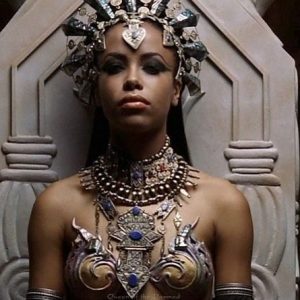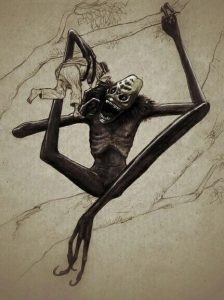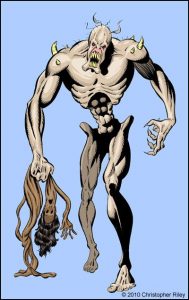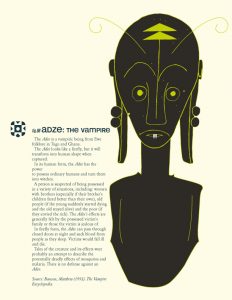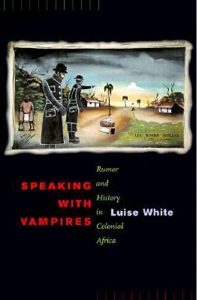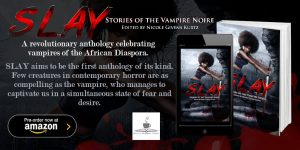Vampires ahoy! Today we’re looking back at one specific film, that fascinating piece of horror/blaxploitation known as Scream, Blacula, Scream (1973). And why? Well, mostly because this sequel to Blacula (1972) is pure seventies Black fun and horror, apart from a few white cops shoved in to increase the victim count. Count, get it? Never mind. And it’s also a film that, whilst enjoyable as it is, should have been great, far greater…
First of all, we say ‘blaxploitation’, but hold your horsepower a moment. Blaxploitation or blacksploitation has been described as:
“An ethnic subgenre of the exploitation film that emerged in the United States during the early 1970s. The films, while popular, suffered backlash for disproportionate numbers of stereotypical film characters showing bad or questionable motives, including most roles as criminals resisting arrest…
“Blaxploitation films set in the Northeast or West Coast mainly take place in poor urban neighborhoods. Pejorative terms for white characters, such as “cracker” and “honky,” are commonly used. Blaxploitation films set in the South often deal with slavery and miscegenation. The genre’s films are often bold in their statements and utilize violence, sex, drug trade, and other shocking qualities to provoke the audience. The films usually portray black protagonists overcoming “The Man” or emblems of the white majority that oppresses the Black community.”
Yet Scream, Blacula, Scream isn’t really that way out, and we could question it being placed under the blaxploitation umbrella (although the period and commercial intent make that fairly inevitable). For our money, it has the makings of a decent mainstream horror film. One with Black characters, of course, for perfectly good reasons.
The non-vampire hero is an ex-cop and collector of valuable African artefacts – he’s not there to clean up mean streets or deprived neighbourhoods – and he is friends with at least one African professor. He has good relationships with the local police; the heroine is a sophisticated woman who happens to practice voodoo as part of a local sect/group. Their social scene is not faux ‘ghetto’ and alleyways, but urbane living room parties.
And the titular Blacula is not a criminal or raving madman, but a cursed African prince who is not exactly delighted by his own vampiric condition. In addition, there’s hardly any other criminal activity in the film – unless you count making and staking vampires – and only a throwaway Black pimp scene for a bit of background excitement. Although described as being set in Los Angles, it was filmed in Atlanta, Georgia.

The film critic Roger Ebert had this to say in 1973:
“Scream, Blacula, Scream” is an adequate vampire movie, which is to say that a satisfactory number of vampires spring out of hiding and sink their teeth into helpless victims, and there are abundant shots of vampires with blood drooling down their chins. But beyond those two prerequisites, the movie isn’t exactly the best thing in its line since Taste the Blood of Dracula.
“(William Marshall and Pam Grier) both have a lot of style; so much, indeed, that it stands out in this routine movie. Marshall has the kind of pseudo-Shakespearean dialog and delivery that Vincent Price and others have been polishing at Hammer. And Miss Grier, a real beauty, has a spirit and enthusiasm that’s refreshing. Also, she can scream well, and that is always important in these enterprises.”
There’s no doubt that William Marshall, as Blacula/Prince Mamuwalde, is well-suited to the role. In fact, he has moments of being magnificent and genuinely threatening. With presence, stature and a deep, powerful voice, he can certainly stand alongside other ‘Draculas’ of the period. As for Ebert’s ‘pseudo-Shakespearean’:
“(Marshall) played Shakespeare many times on the stage in the U.S. and Europe, including the title role in at least eight different productions of “Othello”. His Othello (which was later captured in a video production in 1981), was called by the London Sunday Times “the best Othello of our time”
IMDB
TRIVIA: We were delighted to find that Marshall had been in the first-season episode of The Man from U.N.C.L.E. entitled ‘The Vulcan Affair’ – because 1968 he also appeared as Dr. Richard Daystrom in the Star Trek episode ‘The Ultimate Computer’. A great performance, in which his scientific efforts were initially supported by Mr Spock – a Vulcan.

It’s sad that Ebert’s 1973 review ended with the sentence “Scream, Blacula, Scream is just an interim exploitation effort, and a warm-up for the better vampires in Marshall’s future.” There should have been more, and the film allows for a sequel, but alas, that was never to be – no further Blacula films were made. If the world were fair, Marshall would have ended up with the same status in vampire filmology as someone like Christopher Lee.
SCREAM, BLACULA, SCREAM? SO, IS IT ANY GOOD?
Yeah, but listen…
The score is wobbly. Dark tones occasionally, but too much seventies plinky Quincey ME stuff, and a song at the end which doesn’t help a lot. The direction is erratic – scenes start suddenly without explanation, jumping to ‘and then this’. Women scream for ages and then suddenly stop; men charge around without any obvious clear plan. We can live with that, but it could have been tighter – the pacing isn’t always in keeping with the story.
There’s nothing terribly wrong with the effects, but more money might have helped – the voodoo parts are quite eerie and powerful; the vampire parts vary, and aren’t helped by the use of ‘werewolf’ eyebrows to show that a character is being vampiric.

The humour is light to variable. The character who raises Blacula, Willis (Richard Lawson), starts the film with promise, as if he is going to be a main player, determined to take his place at the head of the voodoo cult, but then gets bitten, and drivels away into a weak comedy figure who serves no real purpose, complaining about not being able to admire his own threads in the mirror. Whilst this puts the focus on Blacula as the ‘baddie’, it’s a wasted opportunity, with the mammaloi/pappaloi issue almost completely abandoned.

The female lead, Lisa (the now legendary Pam Grier), is stylish and capable, but misused (or underused). A touch more agency and determination would have helped. Instead, the focal point for the ‘goodies’ throughout most of the film is the ex-cop we mentioned earlier, Justin (Don Mitchell, also known as Officer Mark Sanger in Ironside). Who is fine, and is given the routine role of being the one who first suspects vampires, gets the authorities to listen, and so on. One of the nice parts is when he persuades a gang of mostly white cops to take up wooden stakes when they raid the vampire lair, and although clearly dubious, they go along with it (not that it helps them that much, as they wander around inside fairly incompetently and get done in a lot).
The only notable white character is the senior police officer Harvey Dunlop (Michael Conrad). Nor is there any reason, to be frank, why he couldn’t have been Black as well.
Where the film works best is at the start and towards the end. When Mamuwalde says that “you have a power unlike my own” to the voodoo priestess, and seeks her help in removing his curse, you have some good stuff. The presence of a voodoo fetish doll during the film’s introductory scene and again when Blacula is being ‘exorcised’ is another nice touch. Which shows you what Scream, Blacula, Scream could have been – an innovative take on the demonic spirit of the vampire, and the power of other ancient beliefs (rather than just throwing a cross and a priest into the mix, as was done with many traditional vampire films). The more ‘African’ moments are the best ones, and given that Blacula himself started as African nobility, this would had fitted nicely.
“Scream Blacula Scream is actually better than the first film because it makes the story a bit more complex and interesting. Bringing the voodoo aspect into the plot, (something that is also the basis of the classic 1974 Blaxploitation-Horror film Sugar Hill), gives us more depth to bite into.”
The Grindhouse Cinema Database
In Conclusion
Yes, Scream, Blacula, Scream is enjoyable and well worth a look, as long as you don’t expect too much; the Hammer-type Dracula franchise that never got a fair chance, and absolute proof that the Black vampire film can work.
Ready for more tales of the Black vampire? You’re in luck, because SLAY: Stories of the Vampire Noire, full of some fantastic authors, is due out 13th October. And it’s available to pre-order NOW:
See also Monday’s post http://greydogtales.com/blog/the-african-vampire-or-where-no-draculas-roam/
More vampire visions later this week, including a look at the comic book origins of Blade the Vampire Killer, and some more SLAY authors… dig it?





